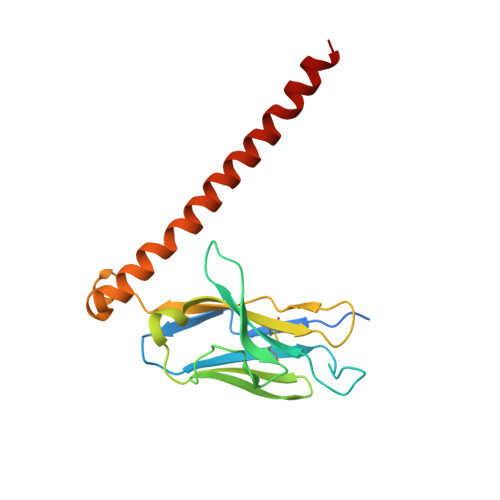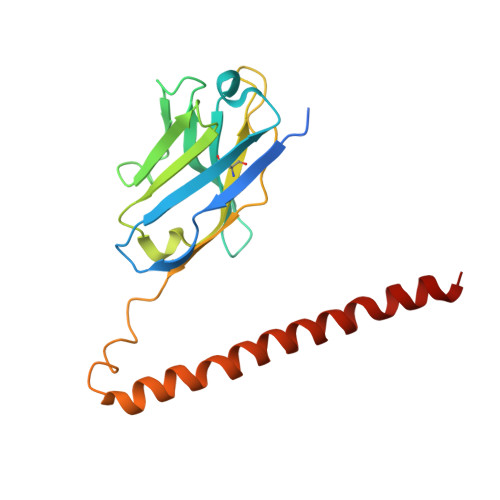The strategy used by naive anti-PEG antibodies to capture flexible and featureless PEG chains.
Liu, Y., Mori, T., Ito, Y., Kuroki, K., Hayashi, S., Kohda, D., Shimizu, T., Ishida, T., Roffler, S.R., Kaneko, M.K., Kato, Y., Arimori, T., Teramoto, T., Takemura, K., Ishibashi, K., Katayama, Y., Maenaka, K., Kakuta, Y., Kitao, A., Mori, T.(2025) J Control Release 380: 396-403
- PubMed: 39921032
- DOI: https://doi.org/10.1016/j.jconrel.2025.02.001
- Primary Citation of Related Structures:
8IQP, 8IQQ, 8IQR, 8IQS - PubMed Abstract:
Polyethylene glycol (PEG) is widely used as a standard stealth polymer, although the induction of anti-PEG antibodies and consequent effects have drawn attention in recent years. To date, several anti-PEG antibodies induced by PEG-modified proteins via the T cell-dependent (TD) pathway, in which affinity maturation occurs, have been reported. In contrast, structures of the na?ve anti-PEG antibodies before affinity maturation have not been described in the literature. Here, to understand the details of the na?ve anti-PEG antibodies capturing PEG, we studied a na?ve anti-PEG antibody induced by a PEG-modified liposome in the absence of affinity maturation via the T cell-independent (TI) pathway. The mutation levels, structures as well as in vitro and in silico binding properties of TI and TD anti-PEG antibodies were compared. The TI anti-PEG antibody showed no mutation and a low binding affinity toward PEG, meanwhile, it allowed PEG chain sliding and weak interaction with the terminal group. Furthermore, the na?ve anti-PEG antibodies may obtain high affinities by forming tunnel structures via minimal mutations. This research provides new insights into polymer-antibody interactions, which can facilitate the development of novel stealth polymers that can avoid antibody induction.
Organizational Affiliation:
Department of Applied Chemistry, Faculty of Engineering, Kyushu University, 744 Motooka, Nishi-ku, Fukuoka 819-0395, Japan.


















